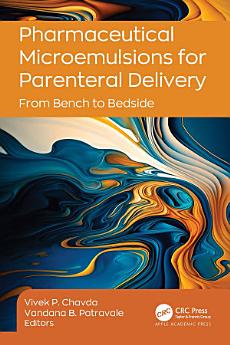Pharmaceutical Microemulsions for Parenteral Delivery: From Bench to Bedside
អំពីសៀវភៅអេឡិចត្រូនិកនេះ
អំពីអ្នកនិពន្ធ
Vivek P. Chavda, MPharm, is an Assistant Professor of Pharmaceutics and Pharmaceutical Technology
at the L. M. College of Pharmacy, Gujarat, India. Before joining academics, he worked in the biologics
industry for almost eight years in research and development, with two successful regulatory filings at
Lupin Biotech (Pune) and Dr. Reddy’s Laboratory (Hyderabad). He has published many national and
international journal papers, book chapters, and newsletter articles and has nine patents in the pipeline.
His research interests include the development of biologics processes and formulations, medical device
development, nano-diagnostics, long-acting parenteral formulations, and nano-vaccines. He is serving as
an editorial board member for various Scopus-indexed, peer-reviewed journals and was listed among the
top 2% of scientists in the world by Stanford University and Elsevier in 2023 and 2024.
Vandana B. Patravale, PhD, is a Professor of Pharmaceutics at the Institute of Chemical Technology,
Mumbai, India. Her research interests include development of nanocarriers with a major emphasis on
infectious diseases, cancer and neurodegenerative disorders, medical device development, nanodiagnostics,
and nano-vaccines. She has over 200 refereed publications, two books, and over 25 book
chapters to her credit. She holds over 30 granted patents and has 14 patents in progress and two
trademark registrations to her credit. She is the Vice President of the Controlled Release Society (Indian
Chapter) and the National Convenor of the Women’s Forum of the Association of Pharmaceutical
Teachers of India. She has transferred more than 20 pharmaceutical technologies to various industries,
including technology on drug-eluting stents, which are being marketed in more than 60 countries.




